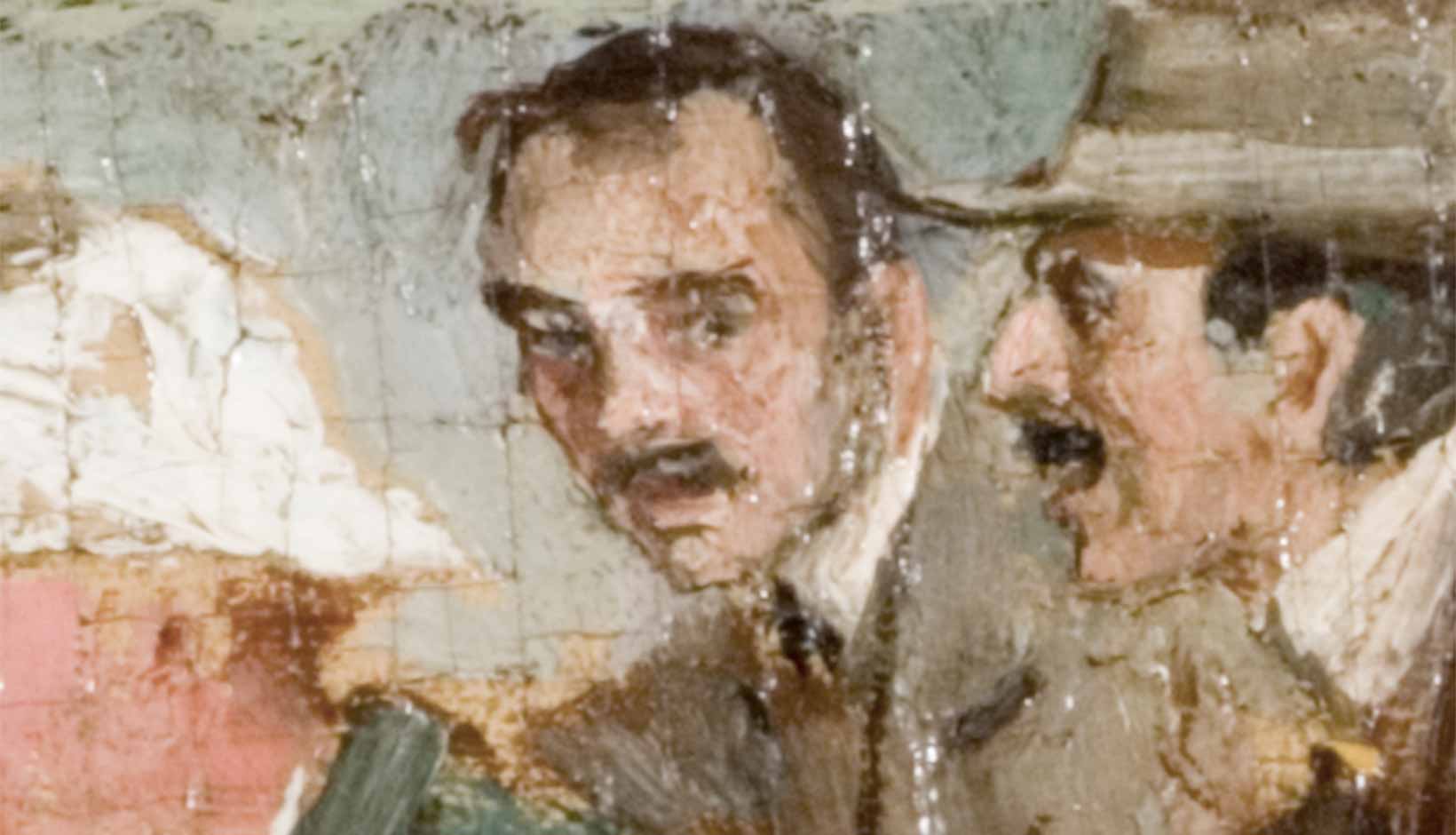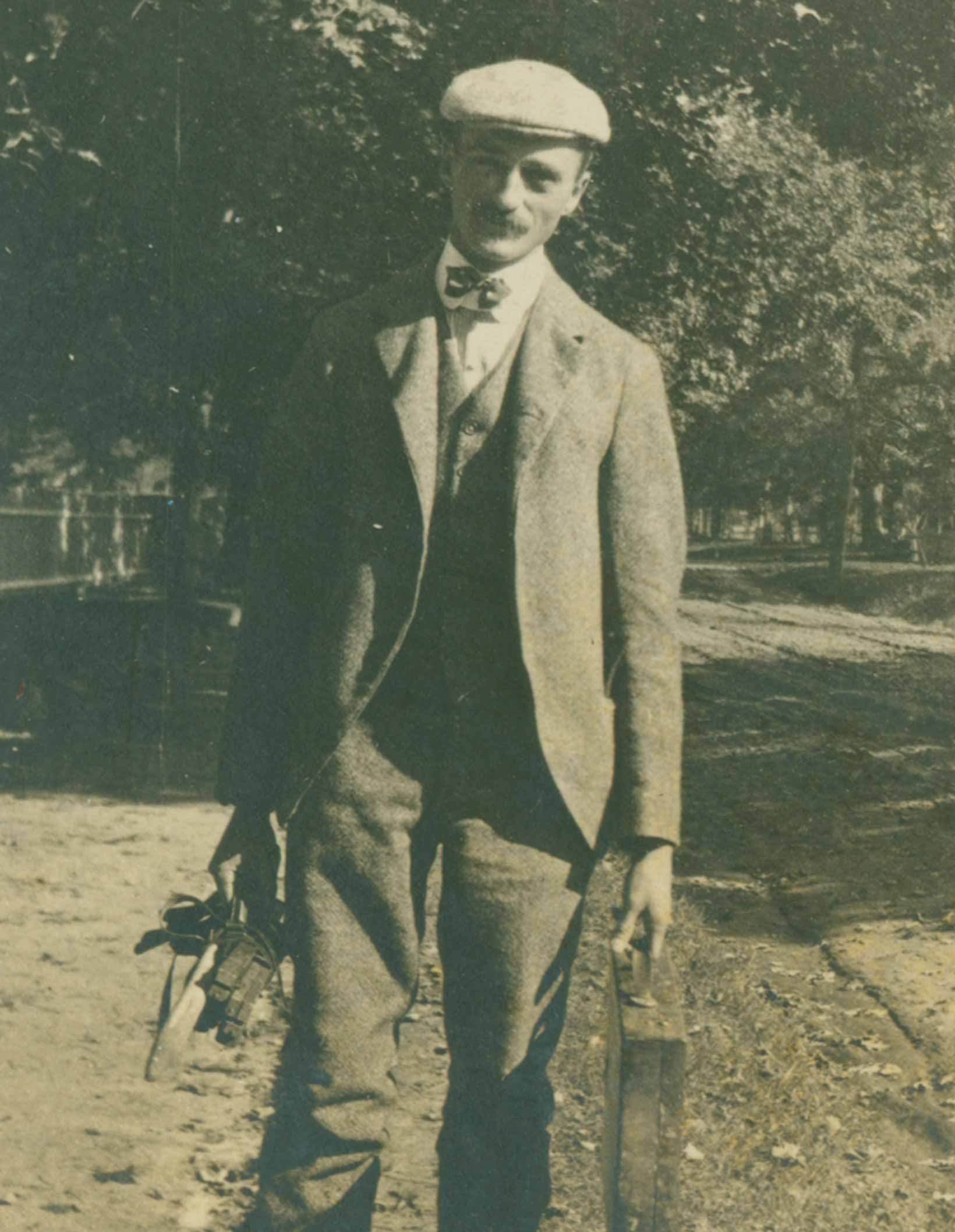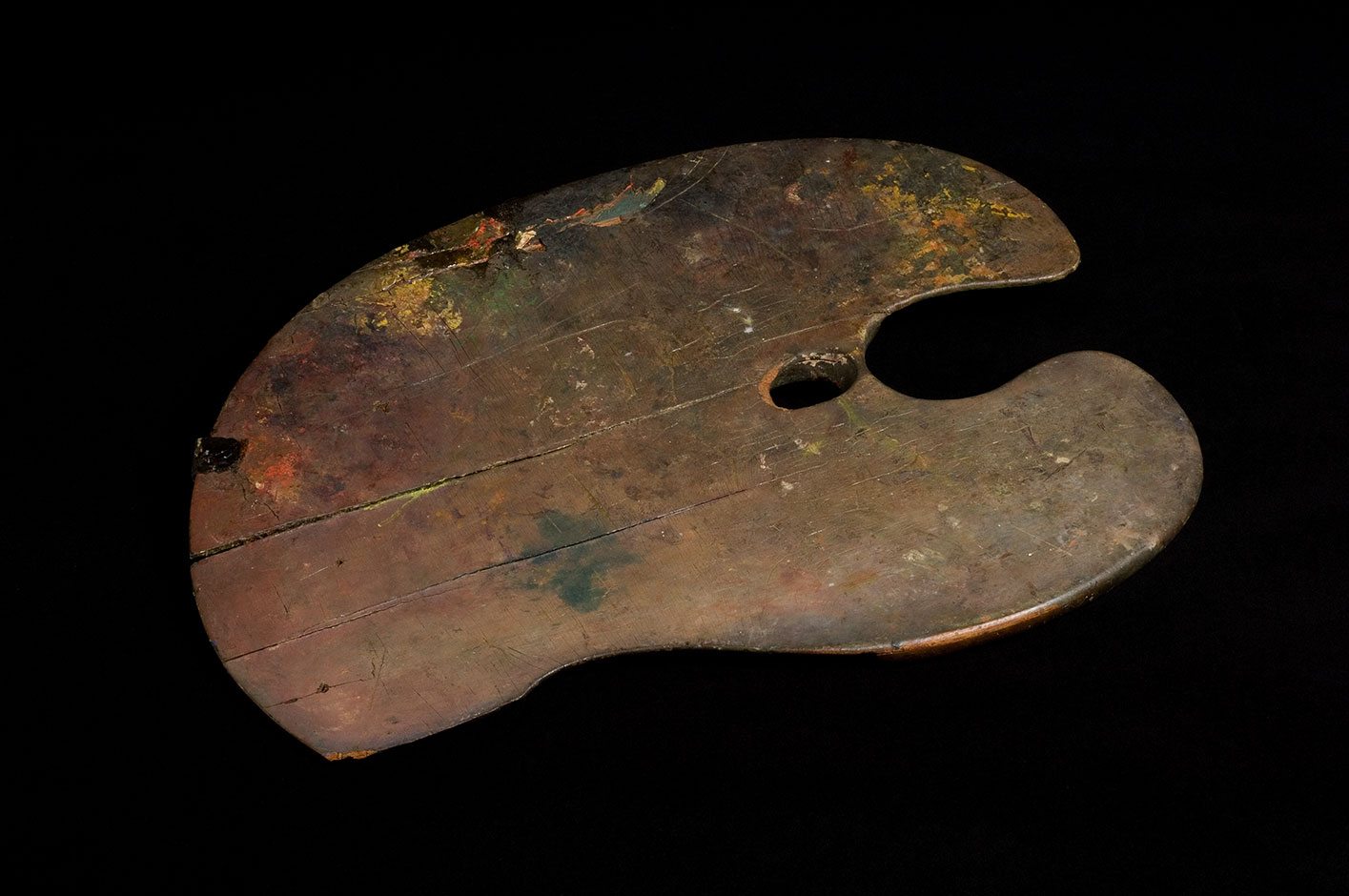Fox Chase
Clark Voorhees
- Museum Hours: Tuesday through Sunday, 10am to 5pm.
Clark Voorhees is the only person in The Fox Chase to make eye contact with the viewer. Like a theatrical aside, his glance outward from his painted world seems to say, “See what I started!”
Indeed, it was probably Voorhees who suggested to Henry Ward Ranger that he look to Old Lyme and the Griswold boardinghouse in his quest to find a suitable location to establish his artist colony.
Clark Voorhees
Born May 29, 1871, New York City
Died July 17, 1933, Old Lyme, Connecticut
In Old Lyme, summers, 1896, 1901-1903; permanently, 1904-1933
Voorhees was familiar with both the town and Miss Florence from trips he took to the area as early as 1893. Voorhees was mad about his “wheel,” as he called his bicycle, and would clock thousands of New England miles on his cyclometer. Three years later, Voorhees boarded in Old Lyme at the Bacon House, while his mother and sister stayed at the Griswold House, a fledgling boardinghouse operated by Mrs. Robert Griswold and her daughter Florence. During these early visits he would spend his days duck hunting and painting.


Voorhees returned to America in 1900 and came to Old Lyme the following year to stay in the Griswold boardinghouse with his fellow artists.
He fit right in. Voorhees’ diary from the summer of 1903 listed baseball games, canoeing, picnics, tennis matches, trips to the beach, and evenings of poker, whist (an early form of bridge), and musical entertainment, in addition to the business of painting. He was so enamored with Old Lyme that he bought a house at the end of the painting season and moved there permanently with his new wife the following summer. Named Ker Guen, meaning “white house” in Dutch, the Voorhees house overlooked the Connecticut River and, along with the lush flower-filled gardens, was painted by several Old Lyme artists.
Coming early to Old Lyme and staying late, Voorhees’ artistic style ran the gamut from dark tonal landscapes to brighter impressionistic scenes. Fascinated with moonlight and snow, Voorhees would adapt his style to the particular subject at hand. In the dining room, Voorhees offered Miss Florence one of his local landscapes in his pair of panels on the door leading to the back stairs, titled The Whippoorwill Road. Here he captured a quintessential Lyme scene, with a country road leading past the stonewalls of a small farm that, over time, has been reclaimed by the forest.







